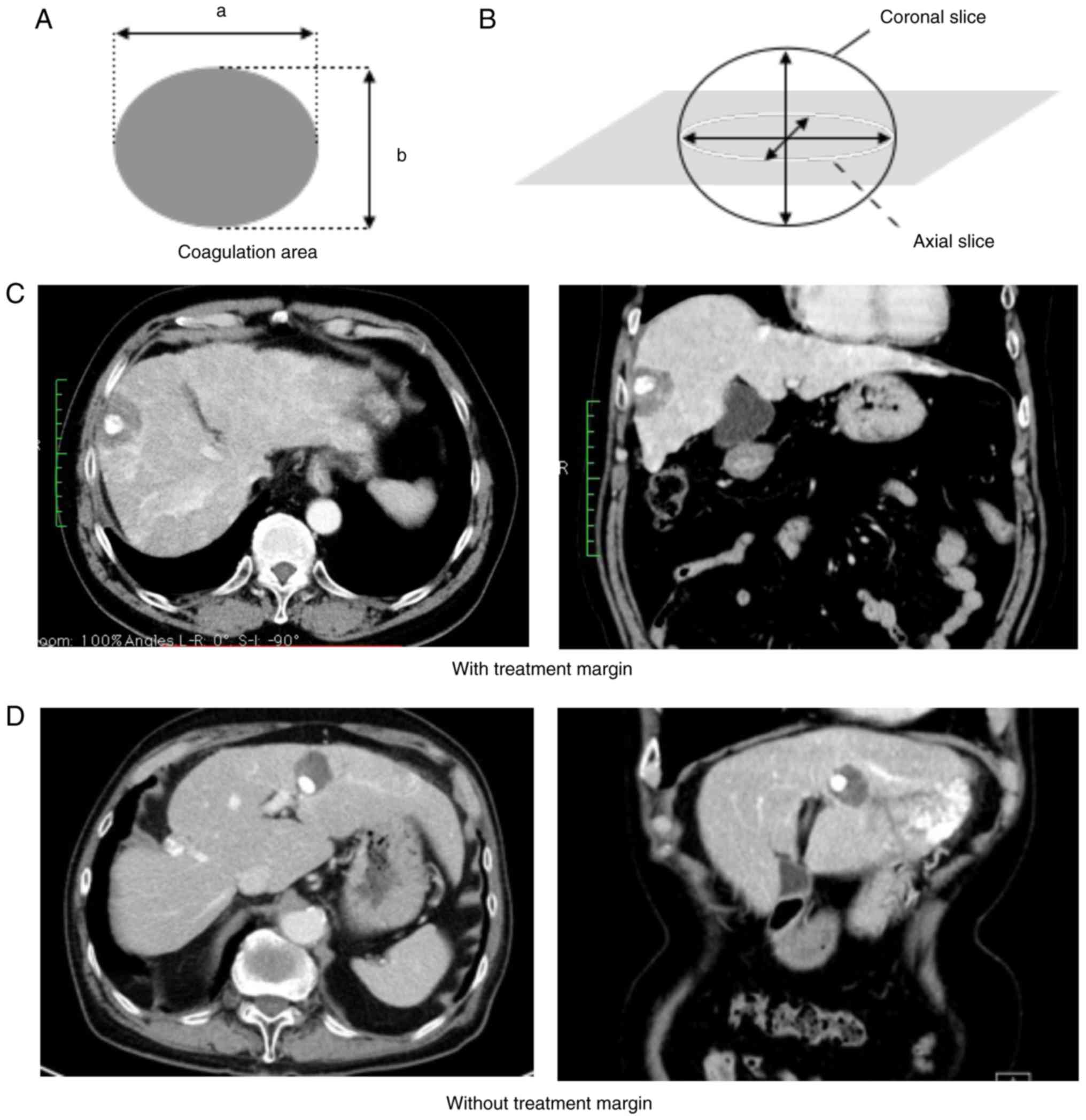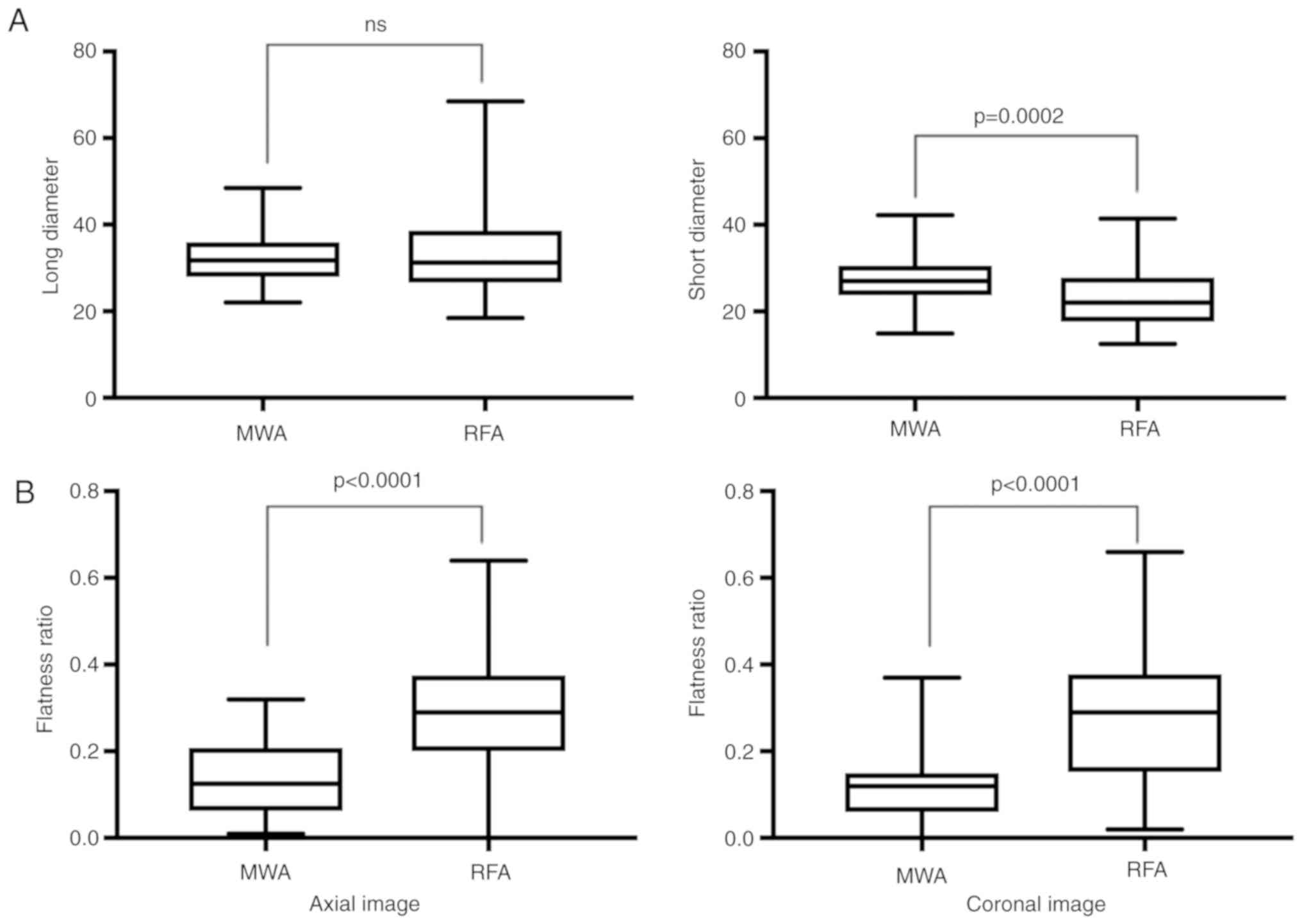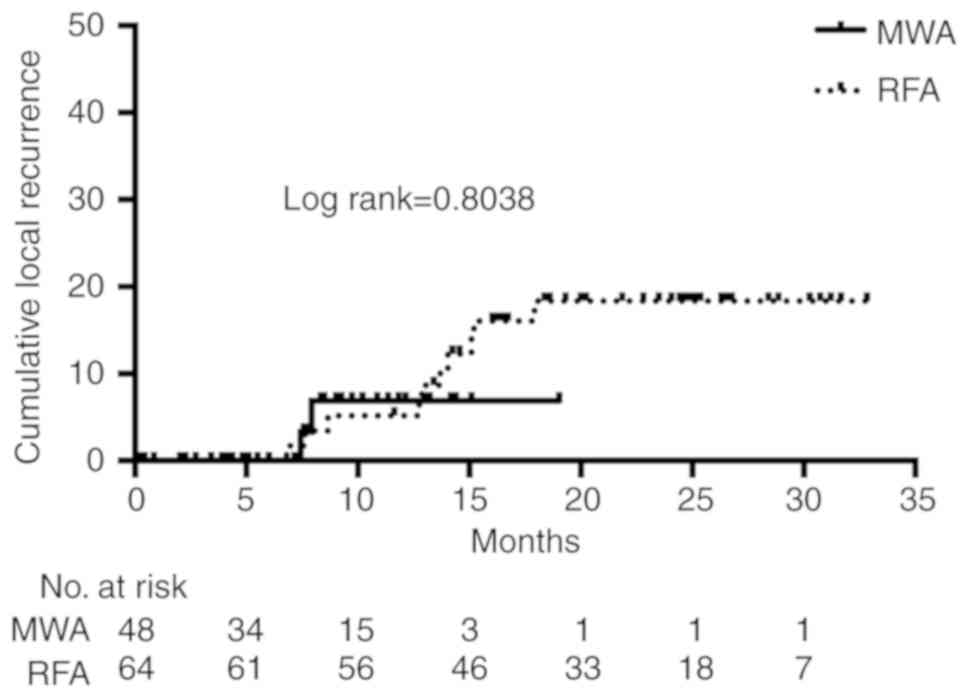|
1
|
El-Serag HB: Epidemiology of viral
hepatitis and hepatocellular carcinoma. Gastroenterology.
142:1264–1273. 2012.PubMed/NCBI View Article : Google Scholar
|
|
2
|
Lencioni R: Loco-Regional treatment of
hepatocellular carcinoma in the era of molecular targeted
therapies. Oncology. 78:107–112. 2010.PubMed/NCBI View Article : Google Scholar
|
|
3
|
Llovet JM: Updated treatment approach to
hepatocellular carcinoma. J Gastroenterol. 40:225–235.
2005.PubMed/NCBI View Article : Google Scholar
|
|
4
|
European Association for the Study of the
Liver; European Organisation for Research and Treatment of Cancer:
EASL-EORTC clinical practice guidelines: Management of
hepatocellular carcinoma. J Hepatol 56: 908-943, 2012.
|
|
5
|
Bruix J and Sherman M: Practice Guidelines
Committee American Association for the Study of Liver Diseases:
Management of hepatocellular carcinoma. Hepatology. 42:1208–1236.
2005.PubMed/NCBI View Article : Google Scholar
|
|
6
|
Bruix J and Sherman M: American
Association for the Study of Liver Diseases: Management of
hepatocellular carcinoma: An update. Hepatology. 53:1020–1022.
2011.PubMed/NCBI View Article : Google Scholar
|
|
7
|
McCarley JR and Soulen MC: Percutaneous
ablation of hepatic tumors. Semin Intervent Radiol. 27:255–260.
2010.PubMed/NCBI View Article : Google Scholar
|
|
8
|
Shiina S, Teratani T, Obi S, Hamamura K,
Koike Y and Omata M: Nonsurgical treatment of hepatocellular
carcinoma: From percutaneous ethanol injection therapy and
percutaneous microwave coagulation therapy to radiofrequency
ablation. Oncology. 62:64–68. 2002.PubMed/NCBI View Article : Google Scholar
|
|
9
|
Yamasaki T, Kurokawa F, Shirahashi H,
Kusano N, Hironaka K and Okita K: Percutaneous radiofrequency
ablation therapy with combined angiography and computed tomography
assistance for patients with hepatocellular carcinoma. Cancer.
91:1342–1348. 2001.PubMed/NCBI View Article : Google Scholar
|
|
10
|
Lu DS, Raman SS, Limanond P, Aziz D,
Economou J, Busuttil R and Sayre J: Influence of large peritumoral
vessels on outcome of radiofrequency ablation of liver tumors. J
Vasc Inter Radiol. 14:1267–1274. 2003.PubMed/NCBI View Article : Google Scholar
|
|
11
|
Ierardi AM, Mangano A, Floridi C, Dionigi
G, Biondi A, Duka E, Lucchina N, Lianos GD and Carrafiello G: A new
system of microwave ablation at 2450 MHz: Preliminary experience.
Updates Surg. 67:39–45. 2015.PubMed/NCBI View Article : Google Scholar
|
|
12
|
Alonzo M, Bos A, Bennett S and Ferral H:
The emprint ablation system with thermosphere technology: One of
the newer next-generation microwave ablation technologies. Semin
Intervent Radiol. 32:335–338. 2015.PubMed/NCBI View Article : Google Scholar
|
|
13
|
Thandassery RB, Goenka U and Goenka MK:
Role of local ablative therapy for hepatocellular carcinoma. J Clin
Exp Hepatol. 4 (Suppl 3):S104–S111. 2014.PubMed/NCBI View Article : Google Scholar
|
|
14
|
Shiina S, Sato K, Tateishi R, Shimizu M,
Ohama H, Hatanaka T, Takawa M, Nagamatsu H and Imai Y: Percutaneous
ablation for hepatocellular carcinoma: Comparison of various
ablation techniques and surgery. Can J Gastroenterol Hepatol.
2018(4756147)2018.PubMed/NCBI View Article : Google Scholar
|
|
15
|
Seki T, Wakabayashi M, Nakagawa T, Itho T,
Shiro T, Kunieda K, Sato M, Uchiyama S and Inoue K: Ultrasonically
guided percutaneous microwave coagulation therapy for small
hepatocellular carcinoma. Cancer. 74:817–825. 1994.PubMed/NCBI View Article : Google Scholar
|
|
16
|
Seki T, Tamai T, Nakagawa T, Imamura M,
Nishimura A, Yamashiki N, Ikeda K and Inoue K: Combination therapy
with transcatheter arterial chemoembolization and percutaneous
microwave coagulation therapy for hepatocellular carcinoma. Cancer.
89:1245–1251. 2000.PubMed/NCBI
|
|
17
|
Vogl TJ, Farshid P, Naguib NN, Zangos S,
Bodelle B, Paul J, Mbalisike EC, Beeres M and Nour-Eldin NE:
Ablation therapy of hepatocellular carcinoma: A comparative study
between radiofrequency and microwave ablation. Abdom Imaging.
40:1829–1837. 2015.PubMed/NCBI View Article : Google Scholar
|
|
18
|
Facciorusso A, Di Maso M and Muscatiello
N: Microwave ablation versus radiofrequency ablation for the
treatment of hepatocellular carcinoma: A systematic review and
meta-analysis. Int J Hyperthermia. 32:339–344. 2016.PubMed/NCBI View Article : Google Scholar
|
|
19
|
Zhou Y, Zhao Y, Li B, Xu D, Yin Z, Xie F
and Yang J: Meta-analysis of radiofrequency ablation versus hepatic
resection for small hepatocellular carcinoma. BMC Gastroenterol.
10(78)2010.PubMed/NCBI View Article : Google Scholar
|
|
20
|
Feng K, Yan J, Li X, Xia F, Ma K, Wang S,
Bie P and Dong J: A randomized controlled trial of radiofrequency
ablaion and surgical resection in the treatment of small
hepatocellular carcinoma. J Hepatol. 57:794–802. 2012.PubMed/NCBI View Article : Google Scholar
|
|
21
|
Lucchina N, Tsetis D, Ierardi AM,
Giorlando F, Macchi E, Kehagias E, Duka E, Fontana F, Livraghi L
and Carrafiello G: Current role of microwave ablation in the
treatment of small hepatocellular carcinomas. Ann Gastroenterol.
29:460–465. 2016.PubMed/NCBI View Article : Google Scholar
|
|
22
|
Dou JP, Yu J, Yang XH, Cheng ZG, Han ZY,
Liu FY, Yu XL and Liang P: Outcomes of microwave ablation for
hepatocellular carcinoma adjacent to large vessels: A propensity
score analysis. Oncotarget. 8:28758–28768. 2017.PubMed/NCBI View Article : Google Scholar
|
|
23
|
Lubner MG, Brace CL, Hinshaw JL and Lee FT
Jr: Microwave tumor ablation: Mechanism of action, clinical
results, and devices. J Vasc Inter Radiol. 21 (8 Suppl):S192–S203.
2010.PubMed/NCBI View Article : Google Scholar
|
|
24
|
Rhim H: Complications of radiofrequency
ablation in hepatocellular carcinoma. Abdom Imaging. 30:409–418.
2005.PubMed/NCBI View Article : Google Scholar
|

















